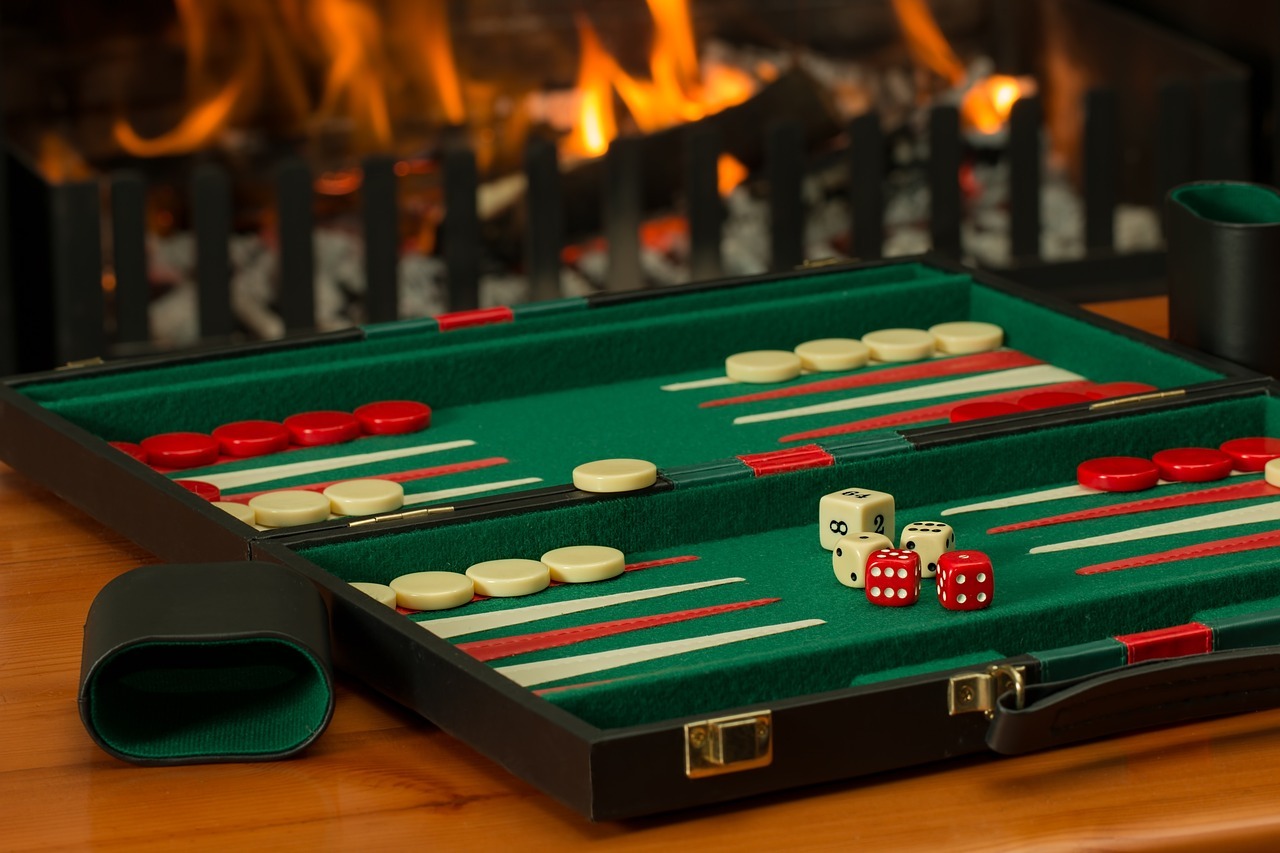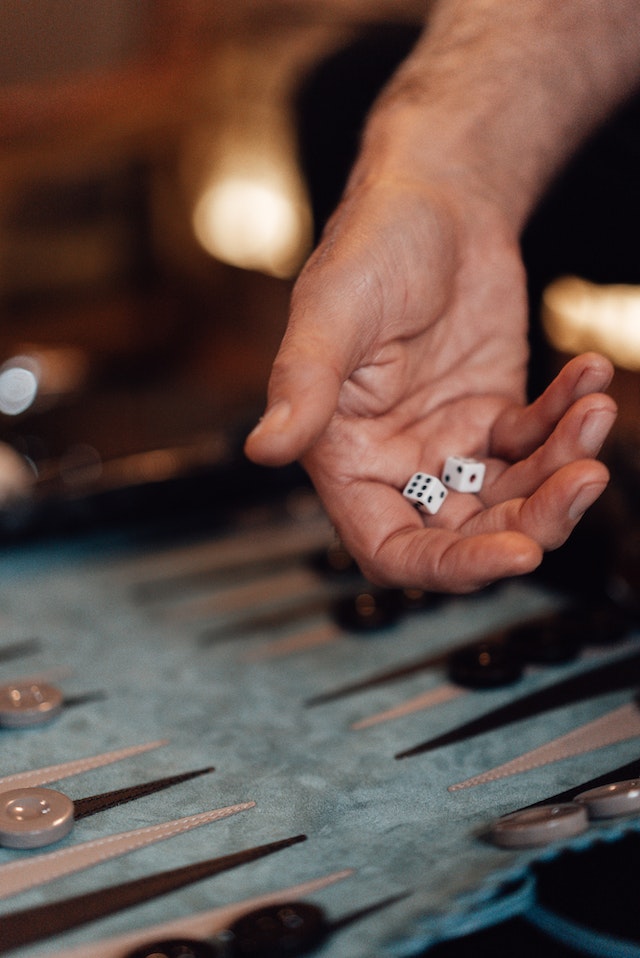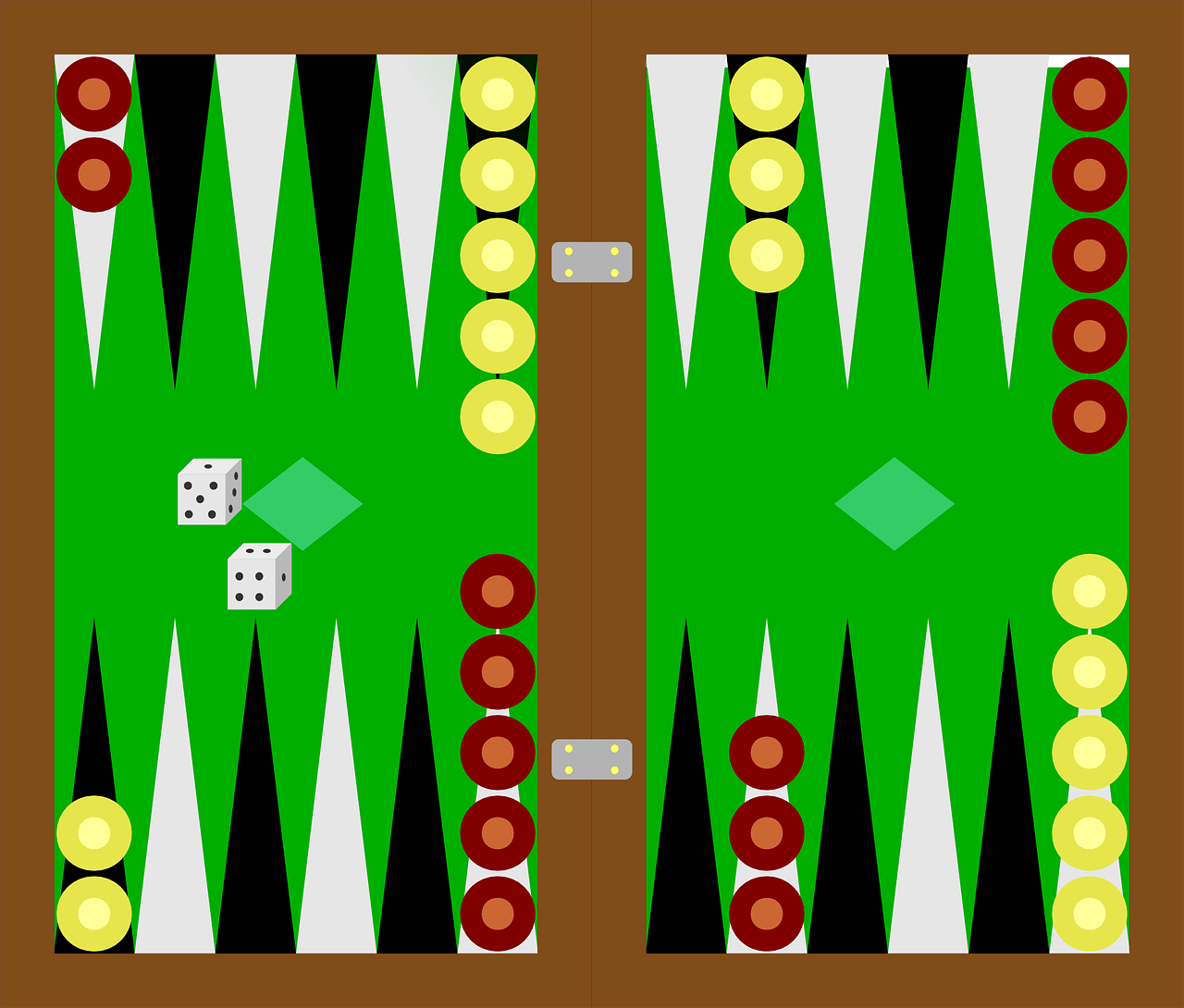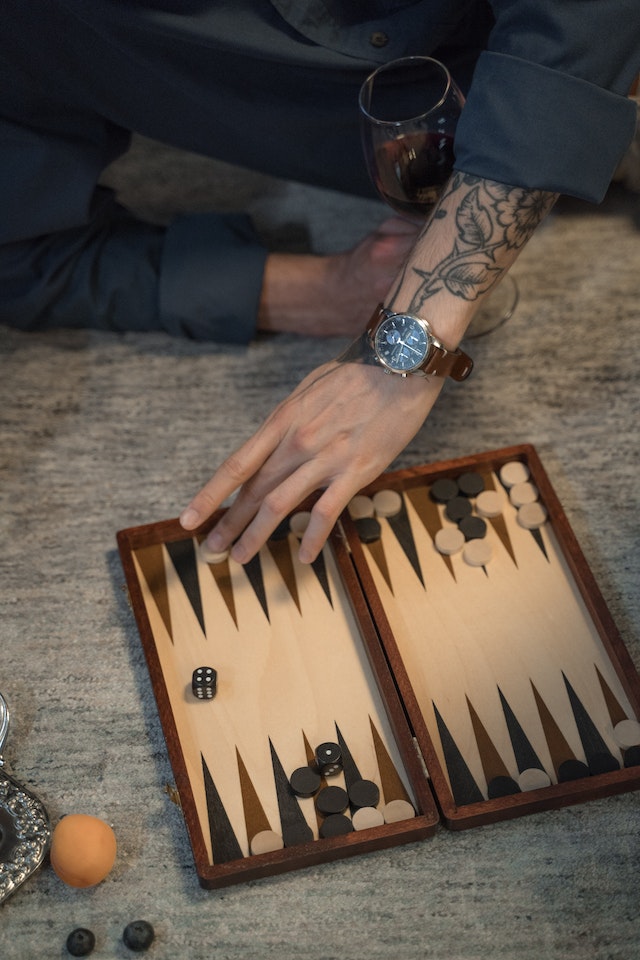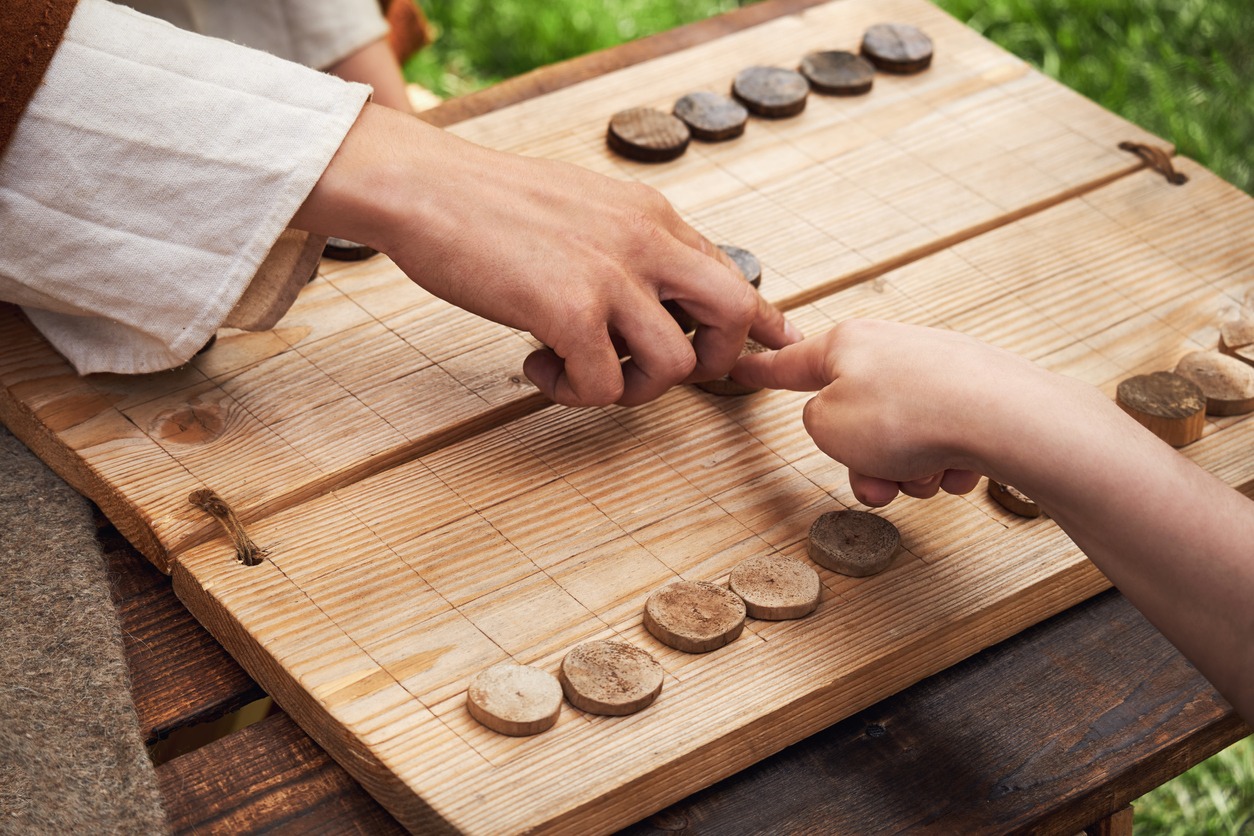Introduction
For ages, players have been enthralled by the intriguing and historic board game of Backgammon. Backgammon is a traditional board game that has captivated players for over 5,000 years. It is considered as one of the oldest board games that continues to pique people’s interest. Despite its apparent complexity, Backgammon is surprisingly simple to learn and play once you understand its rules. This two-player game, which has a Middle Eastern root, blends talent, luck, strategy, and a little bit of both and offers an engaging and dynamic experience. Backgammon presents players with a particular challenge as they try to move their pieces and outwit their opponent. It involves playing on a peculiar board with 24 triangles, known as points, and colored checkers with two varying colors. Discovering the world of Backgammon promises hours of intellectual stimulation and fun for both the experienced player and the newbie.
You may enhance your backgammon game and boost your chances of winning by fully understanding the rules, utilizing effective techniques such as doubling, holding, and blitzing, and investing time learning new strategies through reading, seeking help, and playing regularly. Let’s examine the details and strategies that make Backgammon a classic activity, from its long history to its challenging game techniques and rules.
What is Backgammon?
Backgammon is a timeless board game that has been played for ages worldwide. Backgammon is a two-player board game that blends skills and luck. Backgammon is a game where players move checker pieces across a board or table to reach a goal as quickly as possible. Two dice are rolled to determine how the checkers travel.
Backgammon is played on a board divided into four sections or tables. Each of these sectors is identified by six tiny points painted in two colors. The vertical bar that divides the board in half separates the “inner” and “outer” tables. There are 15 white pieces and 15 black pieces (or two other contrasting colors) in each set of checkers. The number of points employed determines how often the checkers must go from point to point in opposition around the board. Once the dice have been rolled, each player moves their checkers in response. The players can move one, two, or even on each dice roll.
Experts in the game of Backgammon concur that a few methods can assist a player in winning. Still, such strategies must be mastered and used while playing the game. Learning to create a “wall” of game pieces, “closing” the home board, and positioning “anchors” in specific locations on the board are a few of the tactics. Blocking your opponent’s checkers, setting up points of control, and taking calculated risks based on the likelihood of dice rolls are other backgammon strategies. As players must make choices depending on the available actions and the randomness of the dice, the game combines elements of skill and luck.
History of Backgammon
Backgammon is an old game with a long history spanning various civilizations. Backgammon’s rich history can be traced back to ancient Mesopotamia, 5000 years ago, where it was played on a board made of clay. According to archaeological evidence, comparable board games were played in different ancient cultures. The earliest evidence of the game’s existence was seen during an excavation in the ancient city of Ur, now known as modern-day Irag; a Royal Game of Ur was unearthed in the 1920s. The Royal Game of Ur, which dates back to 2600 BCE, was played on a board similar to the contemporary Backgammon board.
The Roman Empire also influenced
Backgammon’s evolution. The Romans played “Duodecim Scripta,” which translates to “twelve lines” in Latin. This game played with three dice and thirty pieces, resembled modern Backgammon. Romans of all social classes greatly liked it. It was frequently depicted in artwork and recorded in ancient books. Backgammon is also a predecessor of the Persian game “Nard,” which was popular in ancient Persia. Nard was introduced to the Islamic world during the Arab conquests and eventually made its way to Europe during the Crusades. Nard boards from the sixth century have been discovered in Iran. The game spread throughout the Islamic empire, influencing the development of Backgammon in many places.
Backgammon evolved and adapted as it moved across many nations. It became popular in medieval Europe and underwent significant changes throughout the Renaissance. The rules were modified, and the game became popular among European royalty. Backgammon’s strategic depth and chance aspects made it attractive to individuals from all walks of life. Backgammon gained popularity in England throughout the 17th century, notably among the aristocratic classes. Backgammon’s first printed rules were published in English in the 18th century, further defining the game’s rules.
The game spread throughout Europe and the Middle East and eventually made its way to the United States, where it continues to be a popular pastime. Backgammon’s popularity grew, which gave way to different regional variations and distinct playing styles. Backgammon has become more than just a hobby and pastime as tournaments and clubs began to arise in the twentieth century, confirming the game’s standing as a competitive game.
Backgammon continues to be a popular board game millions of people play worldwide. Its lasting popularity can be traced to its unique combination of pure luck and an undefeated strategy. Backgammon, whether played casually or competitively, continues to engage players. Over the past few years, interest in playing computer backgammon has grown. This contemporary type of entertainment can be played online or using computer software, with either human opponents or the computer, and at varied difficulty levels.
The Most Notable Figures in the History of Backgammon
Dubbed the oldest game board in the world, Backgammon, along with its luxurious history, are the illustrious people who are experts in the game. Read on to get acquainted with several well-known people who were enthusiastic and expert backgammon players worldwide.
1. Roman Emperor Claudius
Claudius was the first Roman emperor born outside Italy and reigned from AD 41 to 54. Despite being born with a limp and a slight deafness due to an illness at a young age, he managed to organize the conquest of Britain in 43 AD. Claudius was also very fond of the game “Ludas Duodecim Scriptorum,” a pioneer of the modern game of Backgammon. He became so engrossed in the game that he asked for a board to be put onto his chariot so he could play it while he traveled.
2. Winston Churchill
Sir Winston Churchill is a British politician, army officer, and writer. Because of his outstanding leadership during the Second World War, he is recognized by many as one of the most significant figures of the 20th century. Churchill was brought up in an aristocratic family with English and American roots. Backgammon was a popular pastime for Winston Churchill. Churchill had a great love for strategic games and, in his spare time, enjoyed playing Backgammon for comfort and pleasure.
Churchill’s passion for Backgammon was widely known among his friends and coworkers. He frequently engaged in the game during crucial political meetings and talks to relax and sharpen his strategic thinking. Churchill used Backgammon as a mental diversion from the demands of his leadership position and as a venue for friendly competition. Churchill reportedly found considerable satisfaction in both Backgammon’s strategic elements and the element of chance that came with rolling the dice.
3. Thomas Jefferson
One of the United States’ founding fathers was Thomas Jefferson. He was the third president of the United States, holding the office from 1801 to 1809. He was a statesman, diplomat, lawyer, and architect. Jefferson wrote the majority of the Declaration of Independence. Jefferson enjoyed gambling immensely when he was younger and kept track of his wins and losses in his account books. Backgammon game results were mentioned in a few historical accounts. Some were dated at the same time as the preparation of the Declaration of Independence. In his private letters, Jefferson reveals a passion for Backgammon. He occasionally discussed the game and gave his opinions in his letters. Backgammon was one of the games offered even at Monticello, Thomas Jefferson’s Virginia house. He provided his guests with a backgammon table and other games and amusements. It is rumored that Jefferson would frequently play Backgammon with guests and family members during his free time.
4. Charles Darwin
English naturalist Charles Darwin is most known for his contributions to the study of evolution. Darwin followed a set schedule throughout his life, which included playing two backgammon games every evening between 8 and 8.30 pm with his wife, Emma. Even the outcomes of each game they played were documented by him. There is a backgammon table in the drawing room of Down House, where Darwin spent many years living.
Backgammon has piqued Darwin’s interest since he was a Cambridge University student. He played the game with his friends and coworkers, thinking it was fun and stimulating. Backgammon gave Darwin a much-needed respite and an opportunity to unwind from his demanding scientific work, which he believed to be a valuable diversion.
5. Samuel Pepys
Samuel Pepys served as an English parliamentarian and naval administrator. His famous private journal, which he kept from 1660 until 1669, made him most famous. The diaries provided a comprehensive depiction of daily life during the English Restoration. Pepys also provided extensive commentary on his daily activities, including playing Backgammon, which was then commonly called tables, and critical national events. Pepys makes numerous allusions to the game in his journals, including one incident in which he lost a crown playing cards with Lord Bruncker.
In the 17th century, Backgammon was a well-liked activity, and Pepys’s journal documents his love of the game and frequent participation in it. The records show Pepys’ competitive spirit and desire to advance his backgammon abilities. He discusses researching tactics, picking others’ brains, and keeping the score of his victories and defeats in his writings. He used the game to pass the time while having fun, unwinding, and interacting with others.
How to Play Backgammon
Backgammon is played with a board comprising 24 triangles or points in a horseshoe pattern. The backgammon board should be placed between the two players, with the long sides facing one another to begin the game. Each participant needs a set of two dice and 15 checkers of their color, usually white and black. The competition aims to bear off all your checkers before your opponent by moving them across the board.
1. Select the first player. Rolling a single dice will decide who goes first. If there is a tie, the players roll again; the highest roll goes first. The dice numbers determine the player’s ability to move their checkers.
2. Moving the Checkers – You can move a certain number of points based on the number rolled on each die. Only an open point, which is a point not occupied by two or more of your opponent’s checkers, is allowed for the movement of your checker. A new move is made with each roll of the dice. You could move one checker five spaces to an open point, for instance, if you roll a four and a one. You could also move one checker four spaces to an open point and another checker one space to an open point. A middle point of four spaces or one space from the beginning must be occupied if you use both dice for a single checker.
3. Rolling Double or Doubling – Both dice display the same number when you roll doubles in Backgammon. Players can make four moves when they roll two doubles instead of the customary two. In other words, if you roll two fives, you can play checkers in any combination for four moves totaling five spaces.
4. Targeting Your Opponent’s Blot – Blot refers to a single checker of any color situated on a point. When your checker touches your opponent’s blot, the opponent’s checker is taken off the board and placed on the bar or wooden section dividing the game board in half. Your goal is to get your checkers back on board if one or more of them are on the bar before moving any farther. This is accomplished by moving the checker from the bar to an available space on your opponent’s home board corresponding to numbers in the dice after you roll it. However, you will forfeit your turn if the two numbers you rolled correspond to a closed point. Any remaining dice numbers must be played once your final checker has been put back on the board.
5.Bearing Off – You may begin bearing off after all your checkers are on your home board. Bearing off means removing all your checkers off the board. But before doing this method, you must ensure all your checkers are on your home board. You can bear off a checker by rolling the dice into a number corresponding to the spot on which the checker is located. You can legally move using a checker on a higher-numbered point if you roll a number without a checker on the associated point. You must remove a checker from the highest point if such a move is impossible. The winner of the game is the first person to remove all 15 checkers from the board from their starting position.
Winning Strategy on Your Next Backgammon Game
Backgammon is a dice game; therefore, no matter what you do, you’ll probably lose if your opponent rolls sixes and you roll ones. But since there are so many times when the dice are rolled in a backgammon game, the luck usually balances out, and the player who employs the better strategy will likely prevail. Understanding the ins and outs of these methods is essential if you want to know how to win at Backgammon. Consider the following techniques to improve your Backgammon skills and increase your chances of winning:
1. The Racing Game – The basic principle in Backgammon is the race or the running; it is considered the most straightforward. The strategy means you must move your checkers as quickly as you can toward the direction of your home board ahead of your opponent. The pip is the measurement unit used to assess the backgammon race. A pip is the distance a checker must travel to cross the board. Therefore, knowing who is in the lead at any given moment is a huge benefit. According to the fundamental strategy, if you run behind in the race, you must wait and try to hit an opponent’s blot to retake the lead.
2. The Blitz is a full-scale assault against your opponent’s weak checkers. The blitz strategy entails landing on your opponent’s checkers to send them to the bar whenever feasible instead of just racing for home or attempting to build points around the board. The benefit of this strategy is that, in addition to knocking your opponent back a few pip positions, you can trap a few checkers on the bar if they fail to roll the correct numbers to return to the board. Remember that striking near your home row costs your opponent only a few pips, and you risk losing a lot of pips if your attacking checker is still exposed.
3. Holding Game – Another strategy to ensure your victory at Backgammon is the holding strategy which means you must carefully position two of your checkers inside your enemy’s territory. You prevent your opponent from priming the entire board by keeping two of them on their home board. If your other checkers are sent to the bar, this also establishes a safe refuge for your checkers. You will have at least one point to score to rejoin the game safely. In a racing technique, you would typically want to move the checkers as far away as quickly as possible. However, if you find yourself stuck, stick it out and try to catch your opponent with the holding game while they are weak.
4. Back Game – With the back game, you must actually “set up camp” in your opponent’s board, elevating the hold game to new levels. The back game builds on the holding game by preserving several made points on your opponent’s home board. Naturally, you can only play the back game if your checkers are repeatedly knocked into the bar because you only have two on your opponent’s home board. The back game is not so much a deliberate backgammon tactic as it is a way to save a losing game. The back game causes inconveniences to your opponent. It escalates the offensive threat of the holding game by consuming vital home board space. You make it exceedingly challenging for your opponent to move their checkers in and much more complicated for them to bear off since they don’t want to leave one open by taking up more than one point. You will need more than three checkers on your opponent’s home board for it to be effective. That implies that your opponent will have to send you back first.
5. Priming Game – Priming is applied in practically all backgammon games. Making a “prime,” or continuous sequence of earned points across the board. Many experts consider this approach essential when learning how to win at Backgammon. To prevent your opponent from passing and keep them on the outer board, the emphasis is building a wall, preferably adjacent to or in your home board. This skill has many ways to use because you only need two checkers to own a point. Taking over consecutive points is vital. If you have six consecutive checkers, your opponent can only pass once you remove your wall. Priming is most effective when used with the blitz, often known as the “two-way forward” attack. The blitz places your opponent’s checkers on the bar, and the prime ensures that falling off the bar is incredibly challenging, causing your opponent to squander numerous dice rolls.
Backgammon Masters from All Over the World
Backgammon, a classic game of skill and strategy, has enthralled players worldwide. Numerous people have achieved mastery of this age-old board game throughout history, demonstrating their extraordinary aptitude and in-depth knowledge of its complexities. The masters of Backgammon have left an enduring imprint on the complex history of the game, from the prehistoric Royal Game of Ur of Mesopotamia to the contemporary tournaments of the twenty-first century. These legends have brought Backgammon to new heights, encouraging generations of players to test their skills on the board, whether by their creative strategy, flawless judgment, or pure brilliance.
1. Dana Nazarian of U.S.A
Dana Nazarian, whose early years included a lot of backgammon play, was born and raised in Lexington, Massachusetts, and is the Vice President of Cypress Semiconductor’s primary business divisions, the Synchronous SRAM Business Unit, one of the largest semiconductor companies in Silicon Valley. Due to the influence of his family, who viewed Backgammon as an essential component of Armenian culture, Dana, born to Armenian parents, began playing the game when he was approximately six or seven years old.
Nevertheless, despite playing countless games with his father, Dana had only participated in or even heard of a backgammon tournament once he came to Minneapolis in the late 1990s and learned about the Minneapolis Backgammon Club. In Dana’s opinion, Backgammon is the best game ever created, which makes him intensely interested in the sport. His many triumphs include winning the Super 32 Jackpot during the 2007 California State Backgammon Championship and the Championship flight title in the 29th Pittsburgh Backgammon Championships in the same year. He won the primary Championship flight and the Mystic Masters Jackpot in the 10th Minnesota Open Backgammon Championships 2005.
2. François Tardieu, France
François Tardieu, born on November 4, 1964, in Saint Maur, France, has a background in mathematics and finance. Tardieu has won numerous championships and significant cash payouts on the global backgammon circuit and is a three-time Backgammon Champion of Europe. The Third Aix-Les-Bains Backgammon Open in 2007, the Masters of the Sixth Paris Master and Open in 2005, and the Masters of the Eleventh Mitteleuropa Tournament in Nova Gorica, Slovenia, are a few recent examples that come to mind when talking about his achievements in the Backgammon arena.
Additionally, François and Jean-Philippe Rohr won the Consultation Doubles at the Riviera Backgammon Challenge and Open in 2003, and at the Barrière Open in 2006, they also won during the Second European Backgammon Doubles Championships. Tardieu has spent countless hours researching the game of Backgammon and has created several techniques and formulas regarding the game’s strategy, which he frequently shares with other players in online writings. He plans to write a book on these and other aspects of the game’s strategy, which he has spent most of his time studying. He is ranked first among world-class players and has a low error checker play rate.
3. Gus Hansen, Denmark
Gustav Hansen was born on February 13, 1974, and has always been attracted to numbers and mathematics, which is one of the reasons he fell in love with Backgammon when he first learned about it. Hansen currently resides in Monaco, where the Fairmont Monte Carlo Hotel hosts the annual World Backgammon Championships every July. Backgammon captured his attention, and after studying and practicing for some time, he set out to play in live competitions around the world.
Hansen, one of the most feared players in money games, has been included among the top 32 Giants of Backgammon since 1997. Gus claims that Mike Svobodny, who he frequently sees at live tournaments playing high-stakes cash games, taught him much about Backgammon the hard way. Gus faced up against American Nack Ballard in the round of 16 for the Super Jackpot at the 2001 Monte Carlo World Backgammon Championship. Even though Gus lost the game, a later study revealed that Gus played with a remarkably low error rate.
4. Jörgen Granstedt of Sweden
Jörgen Granstedt was one of the only three players who have won the Monte Carlo World Backgammon Championship more than once. He is also one of just two Swedish athletes who won the World Championship. Since 2001, he has also consistently placed fifth among the top 32 players worldwide on the Giants of Backgammon ranking. Jörgen has a long list of significant victories under his belt, including setting first in the Championship flight of the 2001 Paris Master and Open, finishing second to Eric Sfez in the Super Jackpot at the 2003 First Lucien Barrière Backgammon Open in Enghien-les-Bains, France, and taking home a few team championships with partner Pawel Bielewicz of Sweden and James Vogl of England.
5. Jürgen Orlowski of Germany
Germany’s top backgammon player, Juergen Orlowski, is ranked 27 on the Giants of Backgammon list. German-born Orlowski has accomplished several noteworthy things in the time between the two Giants of Backgammon polls. In 2007 he won the Saint Amand Backgammon Trophy, earning €25,000 in prize money and a spot at the PGT Grande Finale. He came in second in the Eden Partouche Backgammon Tournament in France the following year, 2008, and fourth at the second EBGT Georgian Open. He placed fourth in the European Doubles Championship, two WSOB competitions in Cannes and Prague, and two WSOB competitions in 2009. Juergen Orlowski served as the runner at the first Cyprus Backgammon Open, a match on the European Backgammon Tour (EBGT).
Conclusions
Whether you’re a beginner or an expert player, Backgammon is an engaging and intellectually stimulating game that continues to draw players worldwide. It has a long and illustrious history and has established itself as a classic that people from various times and cultures can appreciate. Successful players require a thorough understanding of the Backgammon games and rules. Following winning strategies can significantly improve your chances of success. The optimal backgammon strategy will always be the one that works best for you. It is up to you as a player to master these powerful strategies. For certain people, specific techniques are more effective. Despite being one of the oldest games, backgammon games still play the same; the rules do not change, and the skills one learned in years of practice are still the same skills needed in the current gameplay of Backgammon. So, find a partner, set up the board, and prepare for an epic Backgammon adventure filled with clever choices and thrilling moments.
